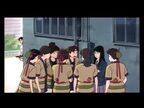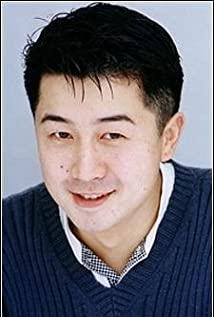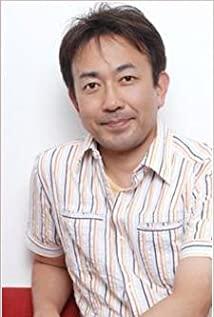Japanese name:
English name: The Ocean Waves
Original work: Hashimura Shoko
Director: Mochizuki Tomomi
Painting Supervision: Kondo Yoshifumi
Production: Tokuma Bookstore, Nippon Television Net, Studio Ghibli
Production time:
Among all the works of Ghibli in 1993 , my favorite is "Hearing the Waves".
"Hearing the Waves" was once a youth literature published in the novels of Tokugawa Bookstore. The original work is Hashimura, who is good at writing faint love stories between young men and women. "Hearing the Waves" is a representative work of his style. The novel was published in two volumes, and was adapted into an animated version by Hayao Miyazaki's Studio Ghibli based on the content of the first volume of the novel. "Hearing the Waves" is not only the first TV animation film in Ghibli's history, but also the first film in its history to be directed by someone other than Miyazaki and Takahata (supervisor: Mochizuki Tomomitsu). The results did not disappoint, and this exquisitely crafted and refreshing work was well received. I think the success of "Hearing the Waves" lies in its excellent performance. Let me try to analyze this work.
Painting supervisor Yoshifumi Kondo said in a commemorative special for the tenth anniversary of "Hearing the Waves": "The first time I heard that "Hearing the Waves" was made into an animation, it was quite popular. Although the original illustrations are I drew it, but I never thought about making this work into an animation, because I think it is the most difficult work to express with animation."
The original novel of Hashimuro Asurako belongs to the prose style, and the plot does not. It is not prominent, or even has no theme. The work focuses on the reader's own detailed taste, rather than the splendor of the plot or action. Faced with such an original work that does not support the story with a plot, in Kondo's words, "I never thought that such a plot can be made into an animation. This work is enough to draw illustrations." Even the screenwriter Kazu Nakamura said, “It’s better to write a live-action TV script instead of changing it into an animation script.”
However, director Mochizuki Tomomitsu saw the potential of the animated version of "Hearing the Waves". He believes that if it is a live-action TV series, a lot of cumbersome things will be filmed, for example, acting and background will affect the texture, and the advantages of animation can just remove these cumbersome things. "If the audience says that the high school students in our play are very realistic, it means that our paintings are successful...many places can only be done with animation."
"Only animation can do it", "Hearing the Waves" is excellent Use the advantages of animation to the performance of the work itself. For example, the pictures in the works, whether it is the contrast of light and shadow (such as art rooms, commercial streets) or the changeable colors (the shade of the trees by the bridge, the roads of Kochi), can be said to be the most praiseworthy of Gib's works.
Based on the above-mentioned characteristics of animation colors and the importance of color elements in cartoons, the design of animation colors must not be a simple copy of life colors, but requires designers to carefully design with revealing themes and renderings based on changes in the development of the plot. Artistic color of the atmosphere. These colors have creative visual and artistic appreciation value. And it must be subject to the continuity and coordination of the rhythm and tone of the entire work. In this respect, "Hearing the Waves" is done just right, with a large number of bright colors, and the whole work is full of faint tones, revealing a sense of ignorance as a teenager grows up, and at the same time full of memories.
In this regard, the painter Kondo said, “It is because of such a simple theme as the person and the background that such a perfect picture can be achieved. Simply put, it is the work itself that requires us to do this. This has nothing to do with the length of time, because this work The only way I can think of is this way of expression."
"Hearing the Waves" uses a completely different way of expression from Hayao Miyazaki and Takahata, and the original work of this film does not have the taste of the two of them at all. If the requirements are the same as those of Hayao Miyazaki, the work will become worse. Since "Hearing the Waves" is produced by the New Era team, and its age is similar to that of the characters in the play, the work depicts the world of young people very realistically. If it were done by Hayao Miyazaki or Takahata, firstly, due to the age gap, secondly, the work is likely to be more idealistic, and it will show the world of young people in the eyes of middle-aged people. It is said that Hayao Miyazaki went into a rage after watching the trial film of "Hearing the Waves", thinking that the work did not faithfully present the inner world of the male protagonist, such as the scene where he said he was flying to Tokyo with the female protagonist, how could he care about himself? Reading magazines, and when men and women stay alone in a hotel, as usual, boys should be unable to control it, and so on. These criticisms just exposed Miyazaki's inability to grasp such subjects. As Ghibli President Toshio Suzuki said: "He (Miyazaki)
is so popular because he knows he can't do this kind of thing." In fact, the scene of flying on a plane is the same in the original novel. Written-"I listened to music with headphones, and carefully read every corner of the magazine on the flight..." It was precisely without saying a word that the protagonist's shyness at the time was truly expressed. , Nervous, indifferent on the surface, but in fact I don’t know what to do, and the complex psychology of wanting to speak but not knowing what to say. Such examples abound. Animation has done a very good job in these aspects, expressing the inner activities of the characters in the most concise way. This is the most difficult point when an animated film expresses the original work.
A prominent example is the scene where the protagonist Taku and his friend Matsuno reunited at the end of the story to relieve the previous suspicion. The novel arranges this scene on the plane that Matsuno is going to pick up, and the car that takes him home goes on. After Tuo got out of the car and went straight home, the two separated, which made the scene a little too light. However, the animated version changed it to after getting off the car, Taku did not go home immediately, but invited Matsuno to take a walk on the beach. After that, the two of them were relieved and reconciled by the beach, bringing the story to a climax. The processing of this scene is not intertwined with dialogue. Accompanied by an open, slow melody, Matsuno’s few words of exclamation, as well as the beautiful scenery of the setting sun on the seashore and the rays of the sky. The lens simply illustrates the environment by alternating panorama, mid-range, and close-range shots. The relieved music made more attention to the beautiful seaside scene. Twice close-ups of the side faces of the two characters, with the hair blown by the sea breeze, with a small smile on the lips, a few strokes clearly explained the two friends' disagreements, and reconciliation. The soundtrack and the picture work seamlessly and impressively.
It can be said that the animated version of "Hearing the Waves" is faithful to the ignorance of the young men and women and the simplicity of the youth in the original content, and it also controls the memorable and sloppy atmosphere full of memories that the original text wants to highlight. It can also make necessary changes to the original according to the characteristics of the animation itself, and choose the best way of expression, so that the animation is not only true to the novel, but also an independent masterpiece in itself.
Here focuses on the scene where the last hero of the story, Taku, recalls the mistress Kiko under the moonlight. This is also the biggest adaptation of the original work by the animation. In the novel, the heroine and heroine meet at a celebration party after attending college, and then they contact each other intermittently. Another female character is inserted in the middle-Tomura Tsumura (this character can be said to be the second heroine in the second part of the novel) , However, the animation is based on the first adaptation, focusing on Takuho Rigako, so this character is directly removed, so as to avoid interference with the theme). At the end of the story, the arrangement of the novel and the animation is to look up at Kochi Castle under the moonlight, but the difference is that the novel is two people, and the animation is one person. This is the end of the first part of the novel. At this time, the hero and the heroine are already together. The two admire the castle tower in the night. It is romantic and moving, but it is too "complete" and lacks space for recollection and imagination. In contrast, I think the animation arrangement is slightly better.
The heroes and heroines in the anime have never contacted since graduation. In the class, Li Jiazi did not appear either. The audience can't help being disappointed for the male protagonist. After the end of the class, a group of friends from Takuwa returned to the familiar city of Kochi again when he was young, and a little bit of starlight blended with the ancient city. At this time, Taku learned from his classmates that the hostess Kiako had secretly taken the test back to Tokyo for herself. Suddenly he couldn't help but think of the pictures when he was with her. The flashbacks of memories and the night scene told were overlapping and intertwined, and the voice-over was a sentence she had said to him. He Tuo returned to the memory of the past, which resonated.
This scene, by zooming out a mid-range scene of Kochi Castle, alternately recalling the scene, on the one hand, is set against the background of the gentle and moving theme, on the other hand, it is continuously folded on Muto’s past dialogues with the actor and echoes, successfully conveying it. An emotion in the chest and throbbing in the heart. Finally, the current image of Muto's imagination appeared, coupled with clear character dubbing, beautifully and implicitly expressed the nostalgia for the male protagonist. By carefully comparing the side face close-ups of the protagonist at the beginning and the end of this scene, we can distinguish the subtle changes in Du Qi's heart-this is a sense of fullness and satisfaction that finally confirms each other, and it is a kind of fixed romance. In the same way, the melody and dubbing of this scene very well mobilized the audience's emotions, ups and downs along with the protagonist's memories, graceful and moving.
This is the most shining part of the whole film. Recalling this delicate process is difficult to describe in words, and most of them can only mention the specific content of the recall. The characteristics of animation make up for this lack. It can even be said that the film technique is very suitable for describing memories. Using flashback performance techniques, the pictures of memories can be reproduced as if they were in front of them. As the teacher once said, "Movies are pioneering, unlike novels, which are closed and go beyond the limitations of language."
Compared with the magnificent scenes and plots in Hayao Miyazaki's works, "Hearing the Waves" is a bit dull. But the moving part of this work is precisely its simple nature and plain plot. This kind of flatness is familiar to everyone, and even a life course that many people have experienced. It makes us who once rushed in real life can not help but stop and think: Is there ever such a person in life? Have you had such a period of time? Such an era of fluttering white clothes...At this moment, memories are like waves of waves, echoing gently and slowly in our hearts...
View more about Ocean Waves reviews










